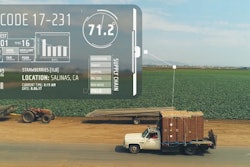
Manufacturers in automotive, high-tech and life sciences have made tremendous inroads with digitization and automation. The domestic food sector is starting to catch up, but worldwide, many food producers still rely on manual processes. The industry realizes that the food supply chain can benefit from Industry 4.0 technologies and is working on how to wisely apply them.
Catalysts Driving the Need for Change
Many factors are driving food manufacturers to embrace advanced technologies. The market is growing and there are many challenges, including the following major issues:
- Increasing Consumer Demands—Consumer preferences have changed, and manufacturers now provide an infinite amount of product choices in new and evolving segments. Consumers dictate the path of the industry in ways ranging from price to quality to product specifications and customizations. Consumers want healthier products that can be prepared quickly.
- Expanding Value Chain—There are more venues than ever before for consumers to purchase food products. Because the market for online food buying will continue to grow, manufacturers need to ship more products to more places. Item location planning accuracy is critical to getting inventory where it needs to be and when.
- Food Safety—The pressure to produce safe and quality food is increasing. Consumers want to know what they are eating, and governments are enforcing stricter rules. The ability to track the lifecycle of a product and quickly identify the source of food safety issues is not just a legal responsibility for food producers, but also a social and ethical obligation to their consumers.
- Pressures to Improve Margins—Food manufacturing is historically a low margin business, so managing costs is a major priority. However, increasing transportation and inventory costs, combined with shorter product lifecycles, make this difficult.
Food Manufacturers Need to Embrace Industry 4.0
The global food supply chain currently is not agile enough to respond to the present needs of the marketplace. While low margins can limit investment in new technologies, the market is forcing manufacturers to innovate and evolve for survival.
All aspects of food production can benefit from advanced technologies. For example, farmers are experimenting with sensors to monitor soil, pests and other environmental issues to assist in proper irrigation and fertilization, which improves crop yields, quality and minimize costs. These kinds of technologies can also be used to provide manufacturers, distributors and sellers with important information that can help to streamline the supply chain and maximize manufacturing and distribution efficiencies.
Another promising Industry 4.0 technology is blockchain. Food and beverage products move through many touch points and are handled by many people, and blockchain can assist in the tracking of food origins. Many Industry 4.0 technologies can also track who touches the product, monitor temperature regulations and provide critical pieces of data. Machine learning can enable manufacturers to incorporate demand in real time to improve efficiencies, and robots help streamline manufacturing and warehouse operations. The supply chain is complex; those who simplify it will win.
How Do You Get There?
Implementing the solutions of Industry 4.0 will be easier if you have a clear vision of how to begin and if your processes and goals are aligned. You need a plan, because your competitors already have one. Start with current systems. Ensure that they are as up to date as possible (latest release) and that they provide you with what you need now.
- Align and Partner—Associate with those who understand your business and the processes and tools that can be used to execute your strategy.
- Evaluate Current Data Sources—Make sure you know what data you need and find out how to get that data.
- Integrate—Determine whether or not current equipment and data from existing systems and planned systems can be connected.
- Start Small—Rome was not built in a day, so start small to avoid missteps—but, start.
Advanced technologies can be intimidating, but they don’t have to be. It can be an exciting journey. Getting ahead of the issues impacting the industry tomorrow now will invigorate your business. Most importantly, it will help you become the agile, effective enterprise that will succeed in the future.




















